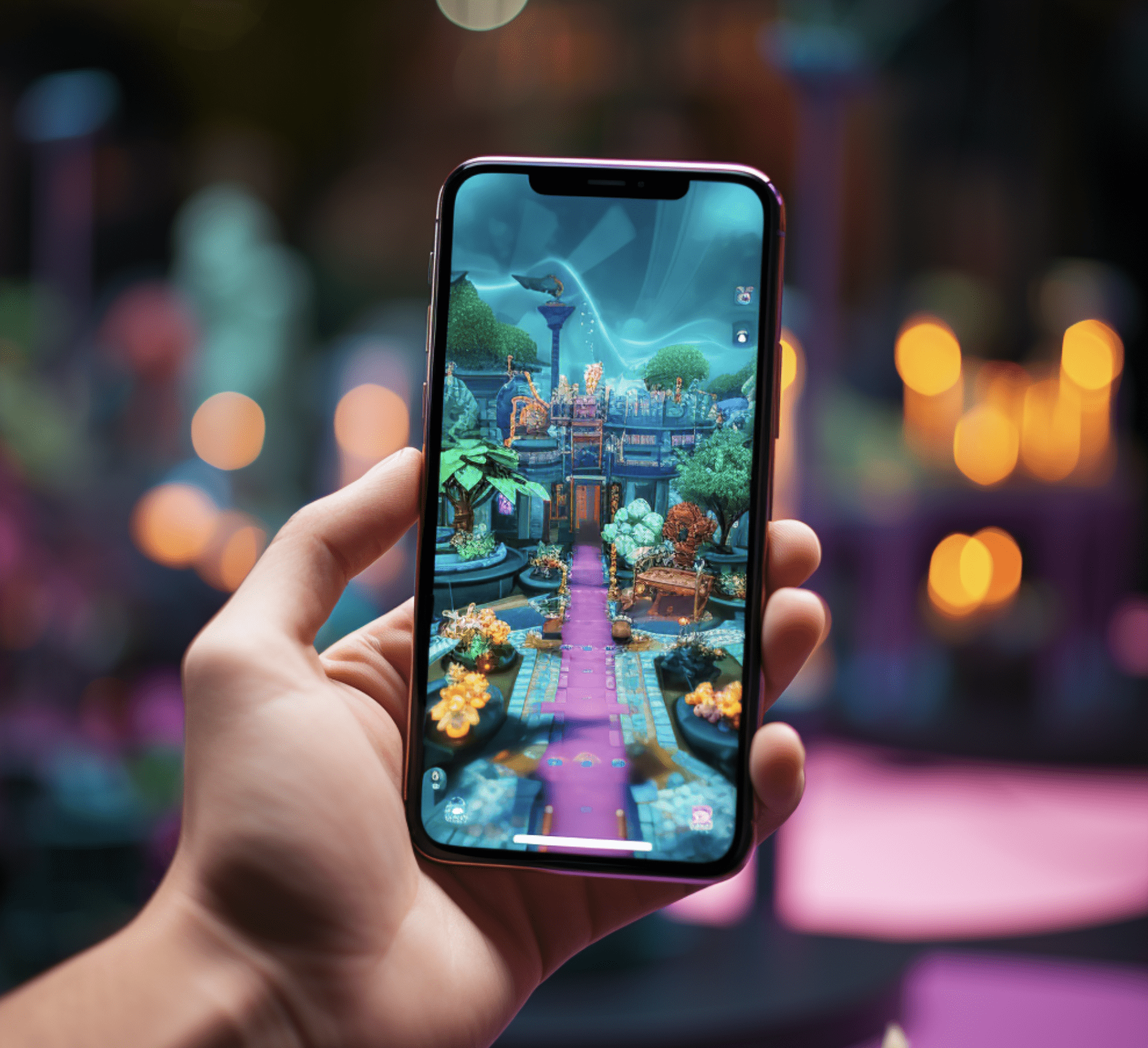The Potential for Trivial Pursuits & Mini Gaming for virtual worlds
Trivial pursuits refer to everything that someone or many consider not worth pursuing.
In the fast-paced digital age, trivial pursuits take on new meaning as individuals seek escape from the mundane. Whether through daydreaming, playing computer games, or consuming online content, people now have countless ways, both positive and negative, to detach from their surroundings. As the world evolves, so do our avenues for escapism.
Storey telling, once confined to books and films, has undergone a metamorphosis with the rise of technology. In today’s world, books are giving way to online content, and the younger generation, such as Gen Alpha, embraces mobile phones not just as tools but as gateways to freedom. While phones facilitate life organisation and flexible working hours, their gaming capabilities still remain a somewhat untapped resource.
Traditional work hours are becoming obsolete, with a shift towards remote work and the gig economy. Leisure time is now broken into smaller, bite-sized chunks, as evident in the popularity of social platforms like TikTok, Twitter, and Instagram. As widely reported, these platforms may contribute to the shrinking attention spans of users, reflecting a broader trend in how people consume content.
We only need to look at the statistics for a few of the top fast-use socialising platforms:
TiKTok, operating as a concise video clip platform, secured the position of the second-most downloaded app globally in 2022, trailing behind Instagram. Notably, TikTok claimed the top spot as the most downloaded app on the Apple App Store during the same period.
In the case of X (Twitter), a platform characterised by its limitation on the number of words per post, strategic changes and rebranding efforts led to over 540 million monthly active users, as reported by Elon Musk.
Instagram, renowned for its focus on visual pictures and stories, currently boasts 2 billion monthly active users. This makes it the fourth-most-used social media platform.
If we look at the overall global mobile gaming market, we will see that gaming or mini games are played by all ages and for various reasons.
The Rise of Mobile Gaming:
Amidst this evolution, mobile gaming emerges as a prominent player. The global mobile gaming market saw 2 billion players in 2022, a number expected to grow to 3.5 billion by 2025. Players of all ages engage in mobile gaming, with the average age of a mobile gamer being 36. Generations from Z to Boomers are participating, each with distinct preferences and spending patterns.
Gen Z and Millennials, known as Bargain Buyers, enjoy high-quality free-to-play games. They seem to be inclined to save on entertainment expenses.
Instead, Gen X and Baby Boomers, identified as Time Fillers, play games during spare moments. With potentially busier schedules, these generations may view gaming as a way to fill brief moments of leisure, leading them to opt for games that are easily accessible during spare time.
Both Gen Alpha (73%) and Gen Z (69%) predominantly use mobile phones for gaming. Newzoo’s research points out that the number one reason for making an in-app purchase for both Gen Alpha and Gen Z is unlocking exclusive content. This is followed by personalizing characters or items.
Gen Alpha players prioritize their spending on gear, followed by playable characters, and lastly, in-game currencies. In contrast, Gen Z players allocate their expenditures predominantly towards in-game currencies, followed by gear and, lastly, playable characters.
Popular Genres, Gaming Preferences and Potential:
Casual games dominate the market, with puzzle, role-playing, action, digital card, and arcade games leading the way. Mobile gamers, particularly in the U.S., prefer playing on smartphones, with action and shooter games being the top choices. The gaming industry, however, seems to mostly focus on the short-term effectiveness of these trivial pursuits, seeing mini games as stand-alone entities and neglecting the potential for creating virtual communities that foster community engagement in immersive spaces.
“To give you an idea of how awesome this could be, envision immersing yourself in a variety of Harry Potter Legacy-themed Mobile Mini Games even while in real-life and away from your computer. Picture engaging in friendly competition through these mini games against your community of friends in a (currently nonexistent) multiplayer/virtual-world rendition of the Hogwarts Legacy game. How incredible would that be for Harry Potter Fans? It would connect virtual-world avatars outside of the specific virtual world, without breaking character. “
Manuel Bolognesi – Enrapture Administrator
With 63% of gamers playing casual games on a regular basis, this is the most popular genre in the video game market.
As we gather insights, it becomes evident that individuals across all generations exhibit a preference for gaming on their smartphones, even in the presence of more advanced computer games. Additionally, a considerable number of users opt for tablets when engaging in casual titles—a platform favored by 71% of mobile gamers.
Casual games are the most popular genre.
The five most popular types of games are:
- Puzzle games (like Candy Crush): 60%
- Role-playing games (like Final Fantasy): 44%
- Action games (like Call of Duty): 42%
- Digital card games (like Solitaire): 41%
- Arcade games (like Subway Surfers): 30%
While most casual games like solitaire or Tetris are usually made for single-player PC gaming, many of them have an online play capability or another kind of multiplayer game play. The MMORPG market puts a focus on massive in-game worlds where players can play together, level up their characters, and help each other on quests and missions. A report by Mordor Intelligence estimates that the market will grow at a compound annual growth rate of 9.5% by 2026.
Percentage of Generations That Play Video Games:
- Gen Z: 81%
- Millennials: 77%
- Gen X: 60%
- Baby Boomers: 42%
- Millennials 77%
The time for mini-gaming can be during a picnic with the family or in between break hours. In the evolving landscape of the Metaverse, the profound impact of mini gaming on shaping our digital future cannot be overstated. Beyond mere entertainment, mobile gaming serves as a communal bridge spanning generations and demographics. Recognising these player preferences, businesses can delve into this burgeoning market, contributing to the creation of virtual realms intertwined with mini games that transcend profit motives. With this in mind, we at Enrapture are working on 5 mini-games for our upcoming Enrapture World in Roblox, as well as the possibility of creating mini-games for brands in MeetWork.AI, our immersive virtual world of professionals.
The lesson learned is that the gaming industry should not underestimate the effectiveness of mini games. Future virtual worlds may be fueled by the engaging nature of mini gaming, becoming more dynamic spaces for shared experiences, connectivity, and “away from computer keyboard” community interaction.


